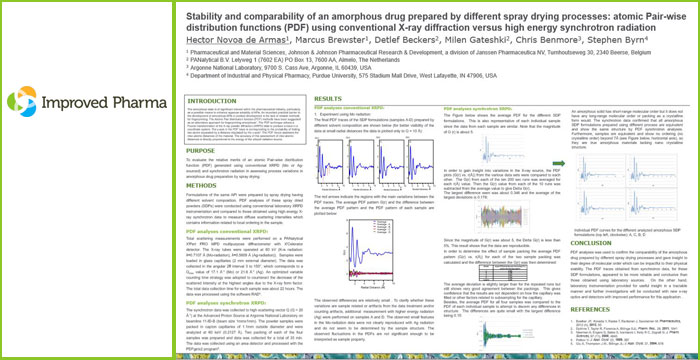Non-crystalline phases such as amorphous states can lead to increased solubility for drugs. However, amorphous materials are notoriously unstable and tend to crystallize over time. As such, many amorphous materials are created in a dispersion with a polymer to increase their physical stability. X-ray powder diffraction patterns of amorphous materials are broad and not useful for probing the local molecular packing arrangements of amorphous materials, but Pair-wise Distribution Function (PDF) analyses can provide valuable information about this molecular packing. If two or more amorphous molecules are adjacent to each other, the dispersion is more likely to crystallize over time. In this poster, we compared PDF analysis conducted with a conventional XRPD instrument and synchrotron radiation. We found that the PDF traces from the synchrotron data were more reliable and conclusive than those obtained using laboratory sources.
For more information, please see our poster recently presented at AAPS.


